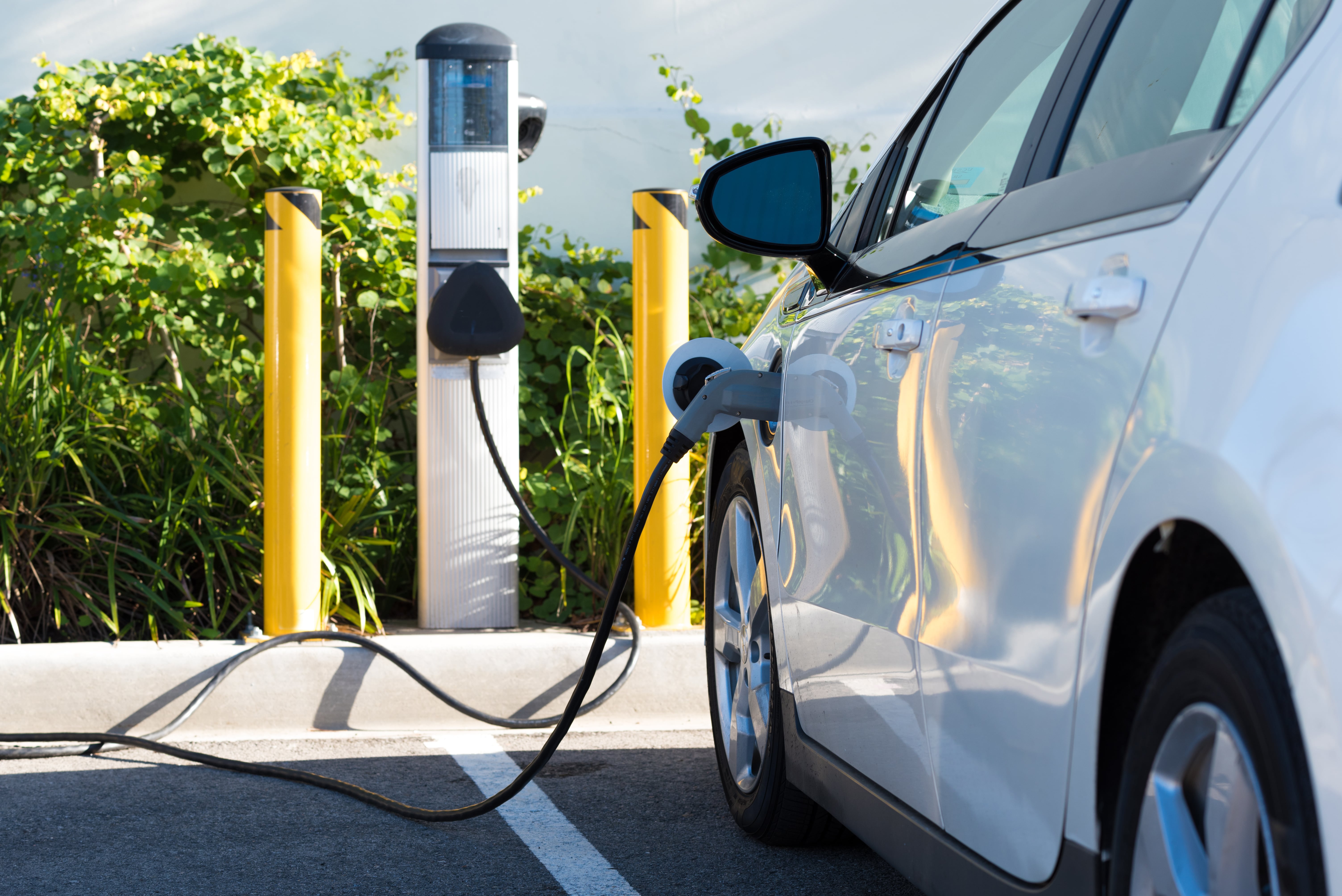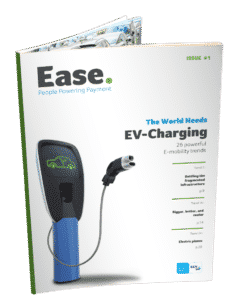The electric vehicle industry has grown at an accelerated rate over the past few years, with over 1 million electric cars sold in 2017 alone - bringing the global total to over 3 million EVs. This is set to accelerate even further. Since countries have become more mindful of the environmental impact of fossil fuel engines, governments have been creating benefits and incentives for EV owners, such as lower taxes. Many European countries have also set out deadlines to phase out petrol and diesel based cars.
These are strong indications that EVs will become widely adopted around the world. Such shifts in the market require a set of standardised methods to be developed and integrated in order to accommodate the transition from traditional to electric vehicles.
In this article, we will explore the challenges related to EV charging payments, and we will propose some solutions based on existing and future technology.
The challenges of EV payments
It’s still early days for the electric vehicles industry, and the growth in the number of EVs has outpaced the investment in charging infrastructure. Because of this, the implementation of charging stations and associated payment methods has been done in a variety of different ways, by a variety of different industry stakeholders. In addition, some operators and public stations are offering free charging. In these cases, there was no interest in implementing payment solutions whatsoever.
For operators and automakers who are taking payments, many have provided custom solutions for their proprietary systems, which rely on closed digital memberships and / or operator-specific cards. These methods are somewhat limiting, and do not deliver on the broader market needs. In order to ensure a good experience for all EV owners, payment methods must meet some mandatory requirements such as security, convenience, and universality.
Ongoing market adaptation for EV payments
Recognising the current inefficiencies, operators are now implementing payment solutions based on tried-and-tested methods. As of 2019, new Allego charging stations in the UK will be equipped with Near Field Communication (NFC) payment technology; enabling users to initiate a charging session and pay for it by tapping their contactless card, digital wallet, or smart wearable device.
Indeed, we implemented a similar ad-hoc payment solution in Germany for Autobahn Tank & Rast, whereby a CCV terminal was integrated with their charging points. These terminals accept contactless cards, and we’re exploring further innovation for the near future.
Contactless technology has been widely adopted across the retail market over the past decade, proving very successful. The solution is familiar to customers, and it ticks the boxes in terms of convenience. However, there is arguably more to charging a car than to buying a cup of coffee.
Therefore, we can look at implementing payment methods which suit the needs of EV users specifically. Below, we propose four feasible payment solutions.
1. App-based front-end solution
Mobile applications are certainly the go-to technology for providing a familiar and user-friendly interface, as well as offering a powerful platform for additional features. The flexibility and security aspects of mobile applications provide the perfect foundation for recurring payments.
From the user’s perspective, the setup is simple:
- Download mobile application
- Register an account
- Provide payment details
- Plug-in and charge
By completing these steps, users will be able to access any EV charging station owned by the operator. To start a charging session, drivers would scan a QR code, identify themselves using RFID or NFC, or even use the geolocation service of the phone. Using an application-based interface can enable seamless and secure payments, allowing customers to drive in, charge their vehicle and drive away.
All the heavy lifting will be done in the back-end by using tokenisation.
Tokenisation is the process of securely encrypting payment details in return for a token, which can be used by the merchant to authorise payments.
In addition, harnessing the power of a smart device offers a huge range of features such as:
- Using geolocation on a device which automatically starts a session based on location
- Better security through tokenisation
- Calculating and displaying estimates for charging sessions
- Tracking the charging and spending over tim
- Monitoring location availability and pricing levels
2. Mobile website front-end solution
For ad-hoc payments, using a website to provide the user interface would work just as well. The process would usually involve a one-time eCommerce payment, although recurring customers could also benefit.
Customers would need to start a session by accessing a website; by either scanning a QR code, entering a limited-access WiFi network, or manually navigating to the operator’s webpage URL. Once accessed, the customer would provide their payment details or complete an eCommerce transaction (via iDEAL or similar) and start the charging session.
Users can also register an account with the operator, and can save the payment details or other key information. As with the application, websites are powerful and can deliver added-value features.
3. The connected car
Looking at the recent advancements in IoT technologies, we can easily imagine a smart car equipped with features that removes our current reliance on external devices such as mobile phones or physical bank cards. The car becomes the identifier and the trigger for payments to be made. This is already happening, and is likely to become the norm.
Even with non-smart cars, we can implement something more rudimental such as identifying a vehicle by its number plate and tracking the amount charged against this identifier. However, that would not really capitalise on the vast possibilities offered by more advanced technology.
Solutions such as these become feasible via a connected car:
- Linking the car to an account which is set up for recurring payments
- The car becomes a smart device, able to pay without the need for a smartphone or card
- The car can be connected to an operator network where all its activity is tracked and payments are completed in the background
- Theoretically, tokenised payments through a connected car can provide seamless experience; automatic payment for tolls, payment for drive-thru refreshment, and more. This would rely on open networks.
4. The lease company
For those leasing a car, payments for charging can become part of the lease agreement. Lease companies can work with the charging station operators, and either include the payments within the monthly instalments, or send an invoice separately to the EV owner. Both options would be feasible.
Visionary ideas about payments in EV
So far, the payment methods we have discussed have made the assumption that charging stations are going to be the standard charging system for the future. What if they’re not?
There is plenty of talk about renewables, including solar-powered charging that provides free sustainable power for EVs. However, the implementation with current solar technology is insufficient from multiple points of view: capacity, size, weight, cost, aerodynamics, and also... weather.
Another option is to invest in roads with built-in charging systems. Sweden has already made a first step in implementing this technique on sections of a road outside Stockholm, which has an embedded rail with a movable arm that attaches itself to the bottom of the vehicle to provide charge. Needless to say, mainstream adoption of this technology would require a great deal of investment, optimisation, and a set of standards to apply across manufacturers and geographies.
Wireless charging is also of huge interest. As mentioned in a previous CCV article, wireless could actually be a game-changer in the drive for better EV charging infrastructure:
“Magnetic coils could be installed under roads by government authorities or private firms, or inserted under parking spaces by off-street parking brands. All of a sudden, private homeowners may be paying contractors to install a wireless charging point under their driveway. Watch this space, because wireless is gaining traction.”
Who would own this infrastructure? Would this be provided for free, or would it be included within a regular car tax? These questions don’t need to be answered immediately, but we must leave no stone unturned before we plan the certain future of EV charging payments.
Summary
Considering that this industry requires large amounts of capital investment, EV charging is unlikely to stay free. Payments will stimulate the industry’s development. Their effective implementation, no matter which charging method becomes the standard, will need to deliver on the EV owner’s needs.
The aforementioned solutions help set the tone for the future, but we’re just getting started. CCV will take an active role in market innovation, pushing new and exciting ways to facilitate payments. Demand will be focused on convenience and consistency in the e-mobility world, and it’s our job to make payments happen seamlessly and effortlessly for all involved.

